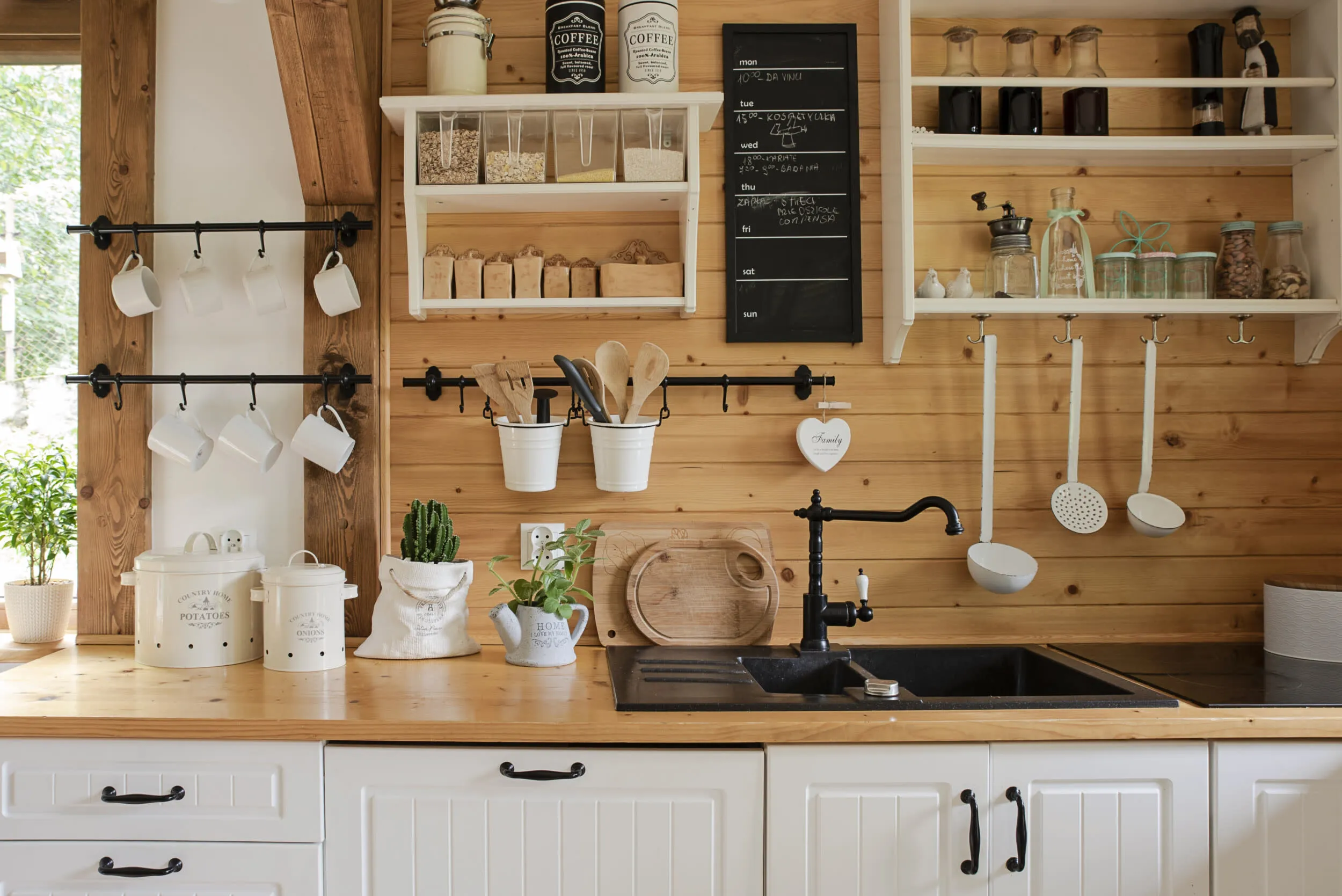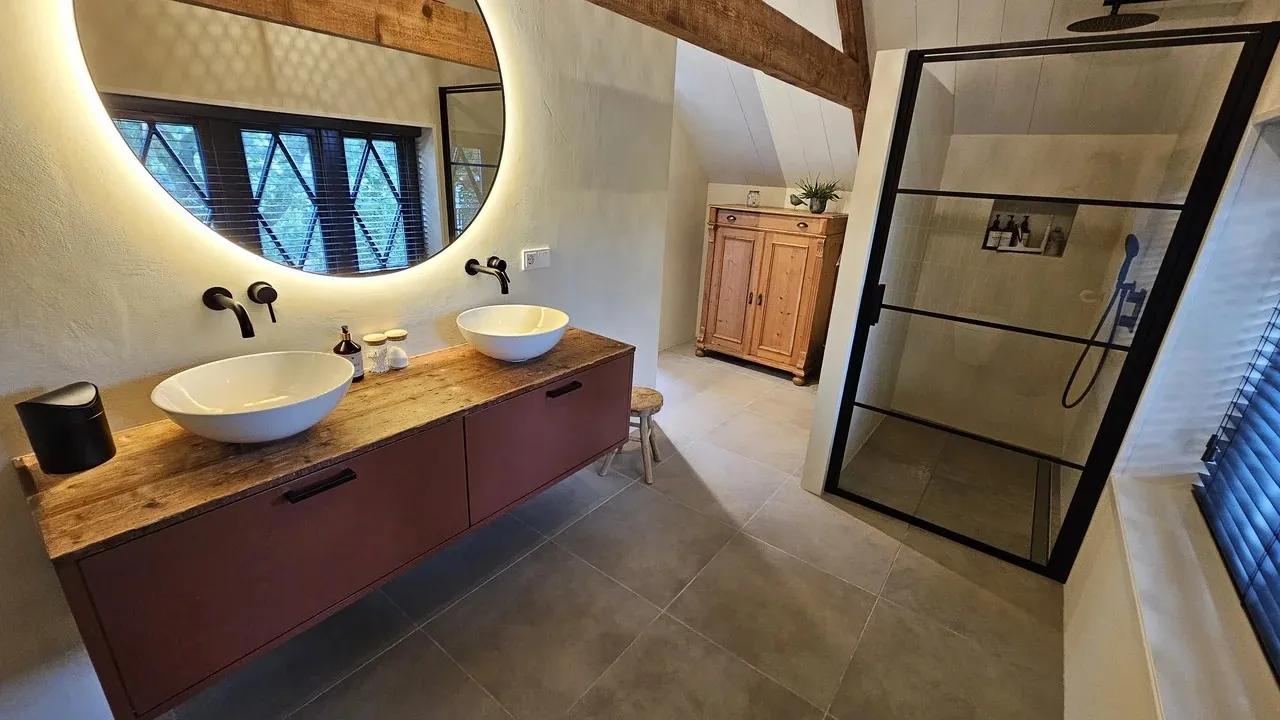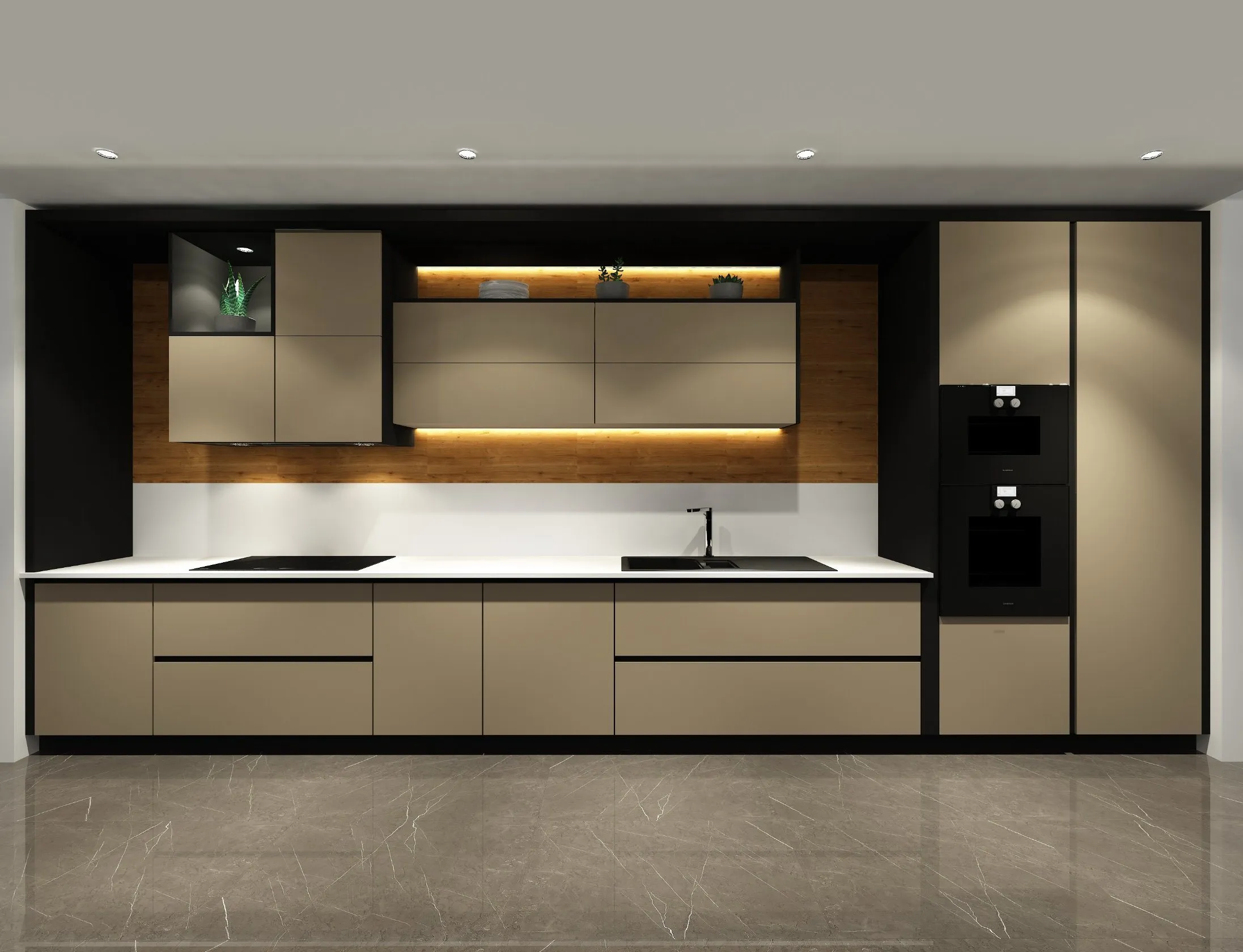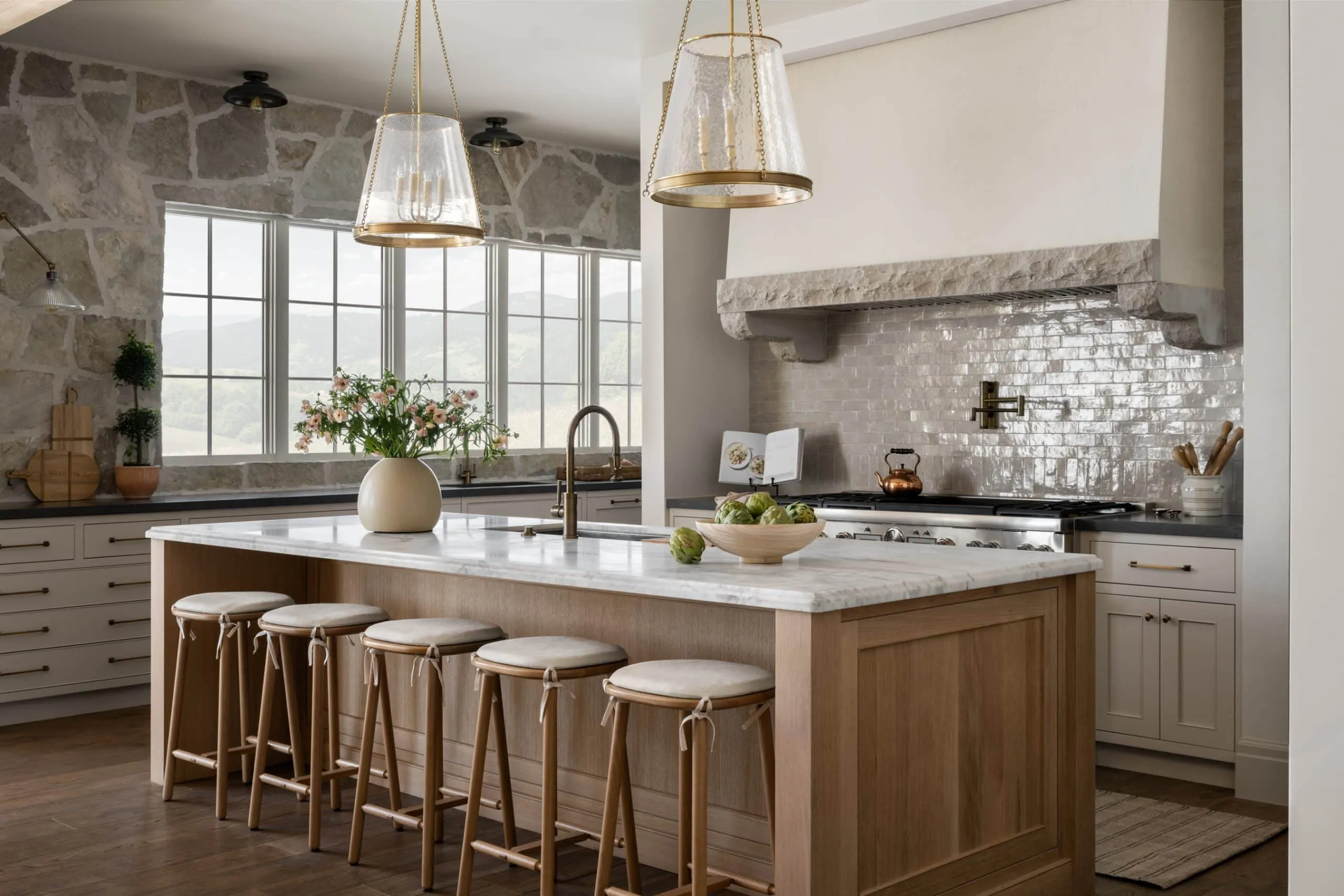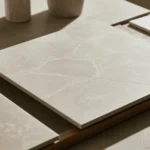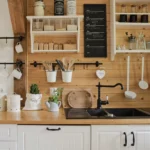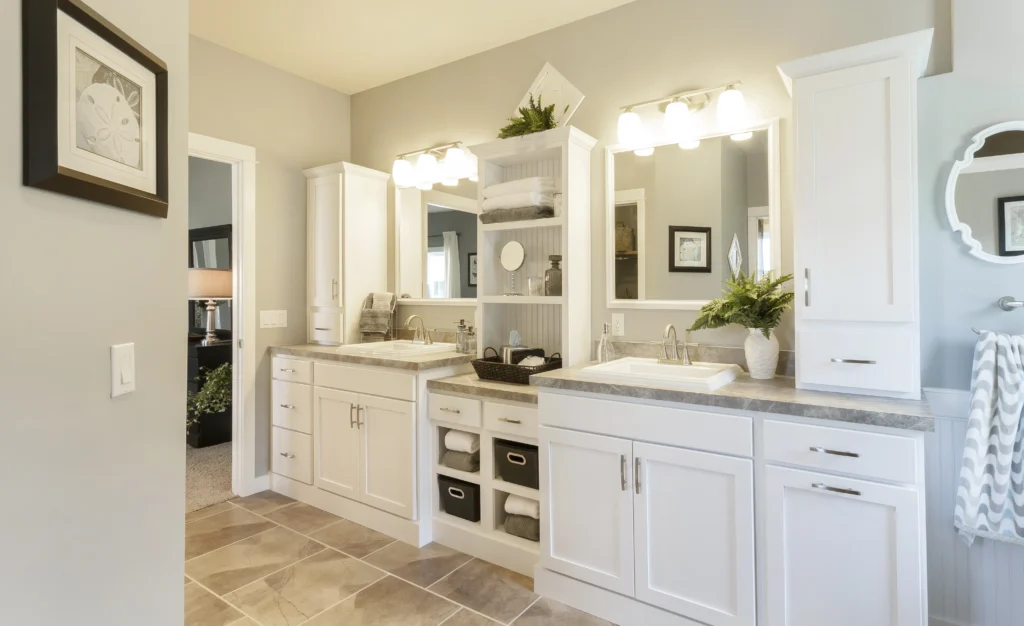
It sounds clever—why not reuse those sturdy kitchen cabinets in your bathroom? But before you start cutting holes for pipes, you should know what makes this idea either a budget win or a costly repair waiting to happen.
We work with overseas homeowners, contractors, and designers to deliver one-stop building material solutions. From kitchens, wardrobes, bathrooms, tiles, floors, doors, lights, and wall panels, we support full-house design coordination, 3D rendering, export logistics, and after-sale service. Our mission is to make renovation simple and consistent from floor plan to delivery.
Using kitchen cabinets in bathrooms can be practical and stylish when done right. Yet, moisture, material, and size differences make it risky for the unprepared. Here’s how to decide if this “hack” truly fits your home—or your budget.
Can you safely use kitchen cabinets in a bathroom?
Yes, but only if you adapt them to resist humidity, water splashes, and plumbing demands.
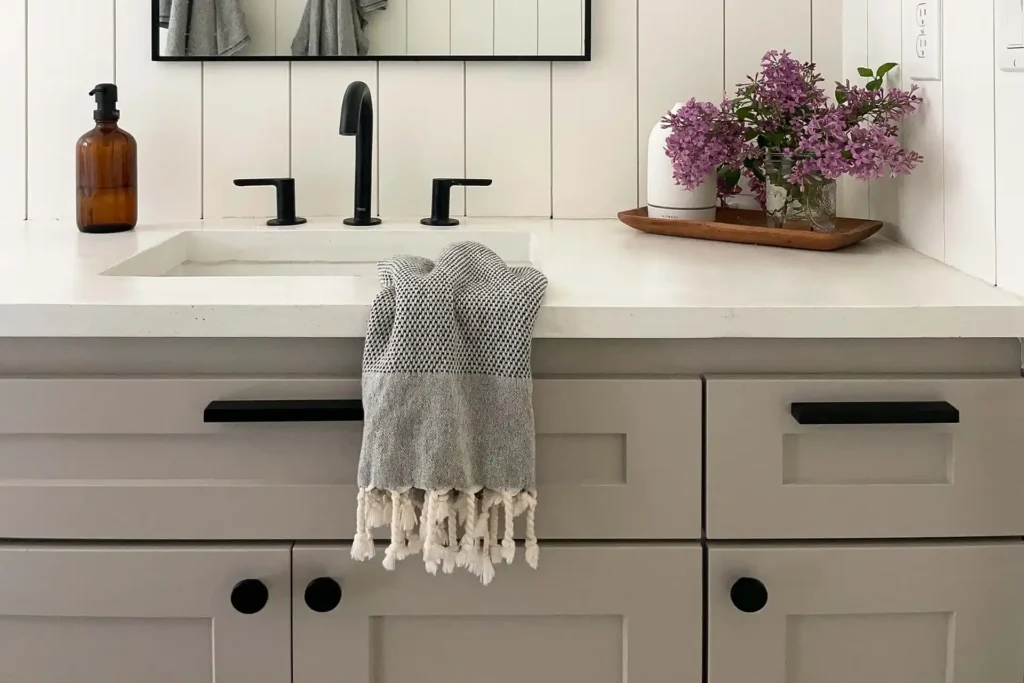
Kitchen cabinets are built for dry environments. Bathrooms, on the other hand, are high in moisture and temperature fluctuation. That difference alone can cause swelling, cracking, or mold if you use unsealed wood.
To make it work, ensure every surface—especially the base—is properly sealed. Use a water-resistant top, like quartz or stone. Elevate cabinets slightly off the floor to avoid direct water contact. Adding a ventilation fan also helps maintain stable humidity levels.
What are the main differences between kitchen and bathroom cabinets?
Kitchen and bathroom cabinets may look similar, but they differ in structure, dimensions, and finish.
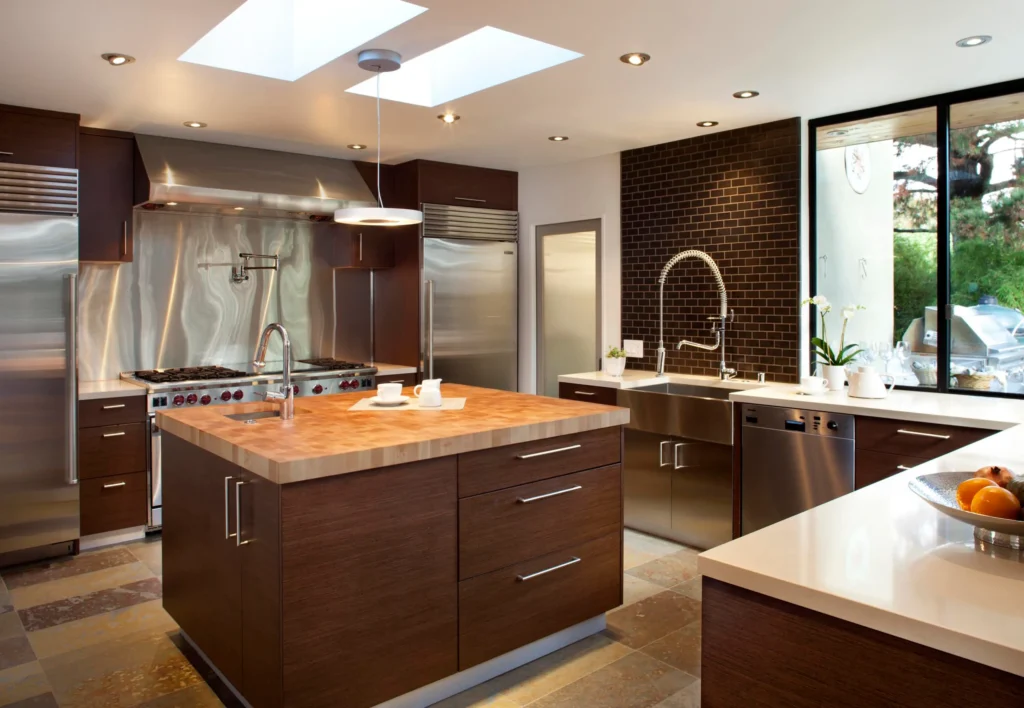
| Feature | Kitchen Cabinets | Bathroom Cabinets |
| Standard Height | 34.5 inches | 31–32 inches |
| Depth | 24 inches | 21 inches |
| Environment | Dry, open area | High humidity |
| Materials | Solid wood, plywood | MDF, PVC, laminate |
| Purpose | Cooking & storage | Vanity & plumbing access |
Kitchen cabinets are deeper and taller. That’s perfect for a kitchen island, but uncomfortable for a bathroom vanity, especially if you plan to install a vessel sink.
This difference exists because of ergonomics—bathroom tasks like washing hands or brushing teeth need a lower surface height to avoid strain.
Do kitchen cabinets handle bathroom humidity well?
Not without help. Kitchen cabinets are often made from materials that absorb moisture.
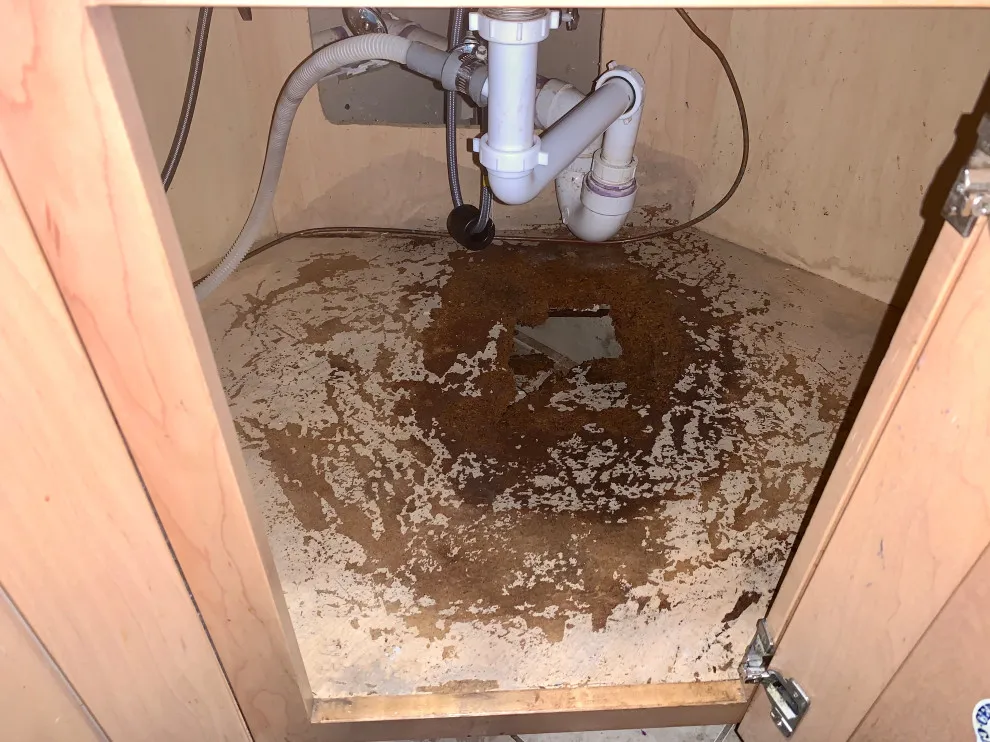
Even hardwood and plywood can expand if not properly sealed. MDF or particleboard, common in budget kitchen cabinets, are especially vulnerable in humid air. Over time, these can warp, delaminate, or host mold.
The safest way to reuse kitchen cabinets is to apply a moisture-resistant sealant and coat all surfaces with waterproof varnish or paint. You can also choose to line interior panels with aluminum or plastic laminate for extra protection.
How can you waterproof kitchen cabinets for bathroom use?
You can make kitchen cabinets bathroom-safe through a few key modifications.
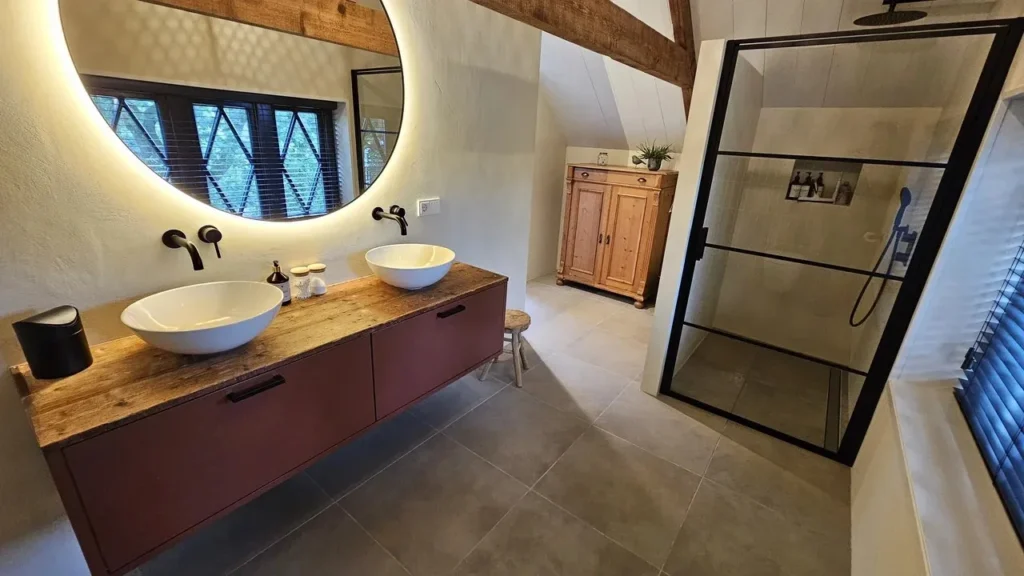
Steps to waterproof effectively
- Seal edges and joints using silicone or epoxy resin.
- Add waterproof paint or polyurethane coating to prevent swelling.
- Replace particleboard bottoms with plywood or composite boards.
- Install rubber feet or a stone plinth to raise the base off wet floors.
- Use a solid countertop such as granite, quartz, or ceramic tile.
These steps transform regular cabinets into vanity-ready units that resist water and wear. However, frequent exposure to steam still shortens lifespan over time.
Are kitchen cabinets the right height for bathroom vanities?
Usually, no. Most kitchen cabinets are too tall for standard bathrooms.
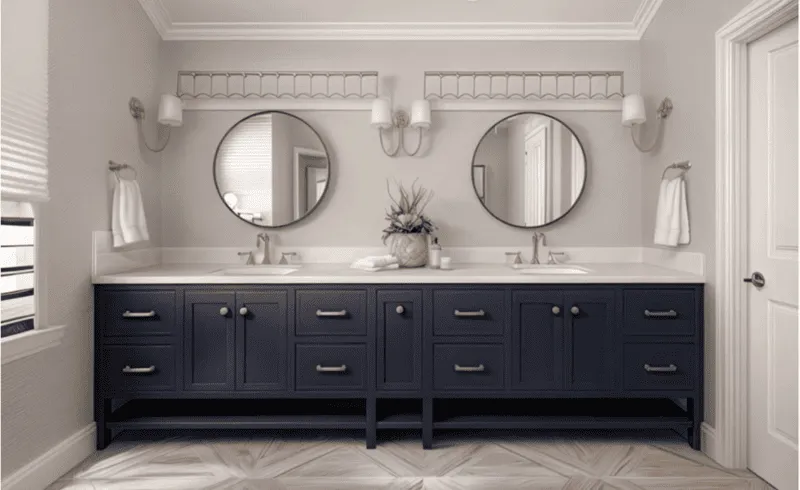
Bathroom vanities usually measure around 31 inches high, while kitchen cabinets stand closer to 34–36 inches. The taller height can make daily use awkward—especially for children or shorter adults.
If you want to repurpose kitchen cabinets, consider removing the toe kick or trimming the base to reduce height. Another option is using a vessel sink, which can balance the added height visually while keeping it ergonomic.
What materials work best for bathroom conversions?
Choosing the right materials decides whether your project lasts years—or fails in months.
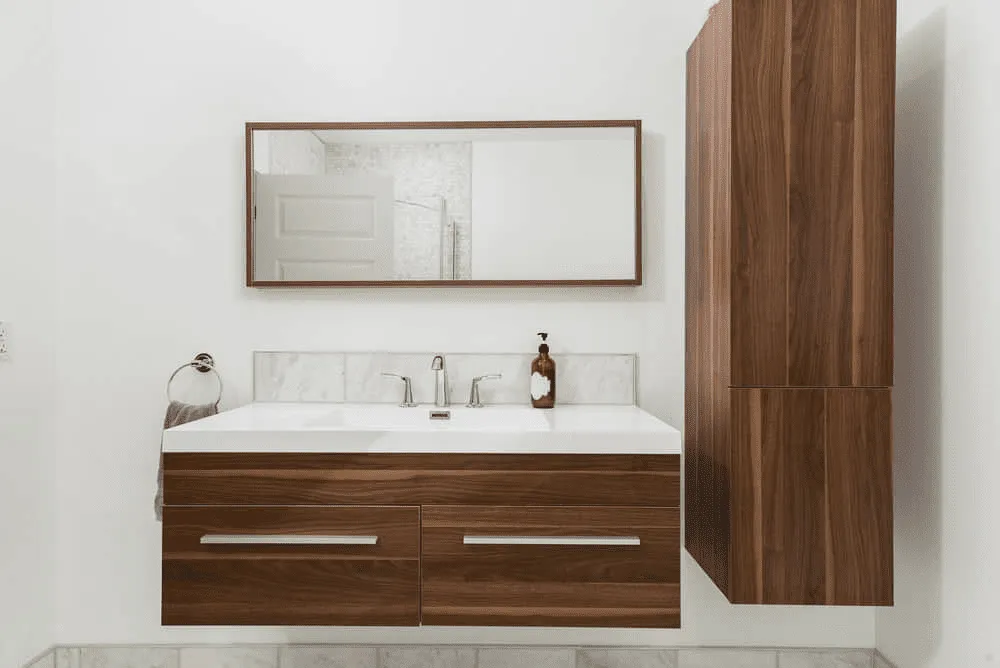
| Material | Water Resistance | Cost | Look | Notes |
| PVC | Excellent | $$ | Modern | Best for full humidity exposure |
| Plywood | Good | $$$ | Natural | Needs sealing |
| MDF | Poor | $ | Paintable | Not recommended unless sealed |
| Laminate | Very Good | $$ | Glossy | Easy to maintain |
When converting kitchen cabinets, prioritize durability over looks. For instance, laminated or marine-grade plywood cabinets handle moisture better than untreated wood.
PVC, though less common in kitchens, is ideal for bathrooms because it’s 100% waterproof and resists mold.
How much does it cost to modify kitchen cabinets for bathrooms?
It depends on materials, labor, and finish.
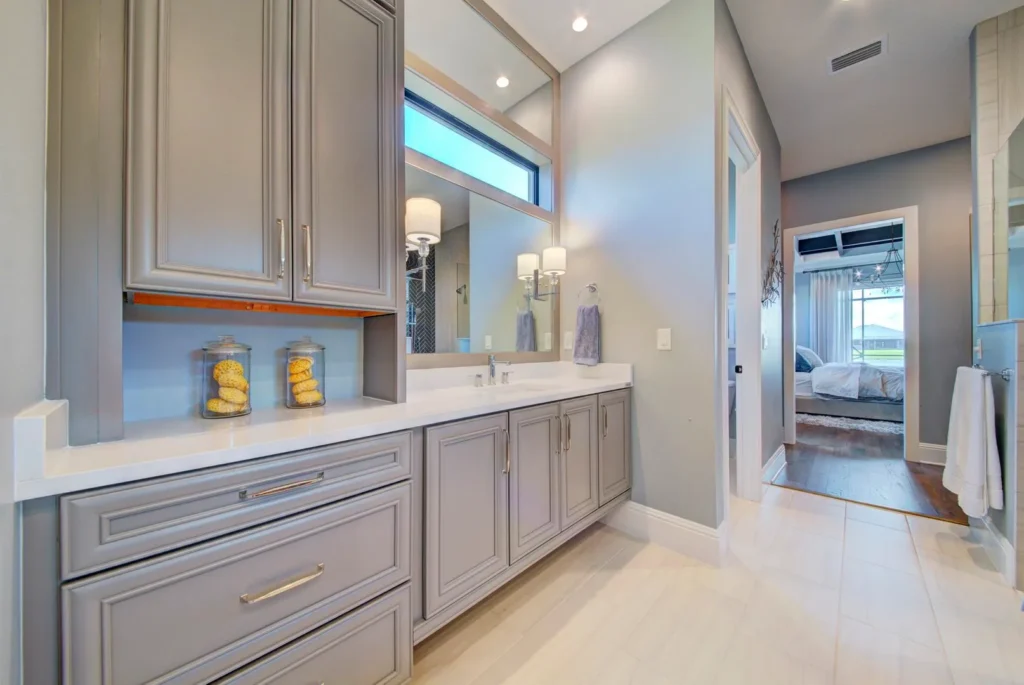
| Type of Modification | Estimated Cost (USD) |
| Waterproof sealing | $50–$150 |
| Plumbing adjustments | $100–$250 |
| New countertop | $200–$600 |
| Total DIY conversion | $300–$800 |
| Professional remodel | $800–$1,500 |
While repurposing can save money, improper preparation might cost more in the long run if water damage or mold appears.
Can kitchen cabinets fit bathroom plumbing easily?
Not always. Kitchen cabinets aren’t built for sink drain pipes or water lines.
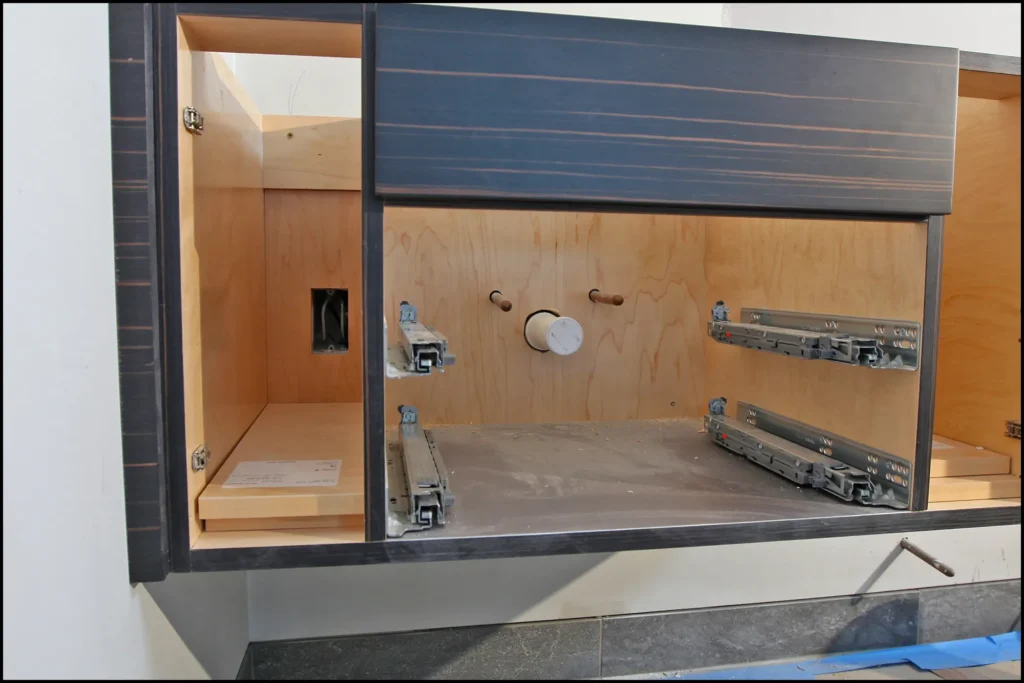
You’ll likely need to cut holes in the back or bottom to fit plumbing. The challenge is keeping those cuts neat and sealed to prevent moisture penetration.
Pro tip
Before cutting, measure your sink and trap placement. Reinforce any structural areas you trim with wooden braces or metal supports to maintain strength.
Are kitchen cabinets more durable than bathroom cabinets?
In general, yes—kitchen cabinets are made to hold heavier items and withstand frequent use.
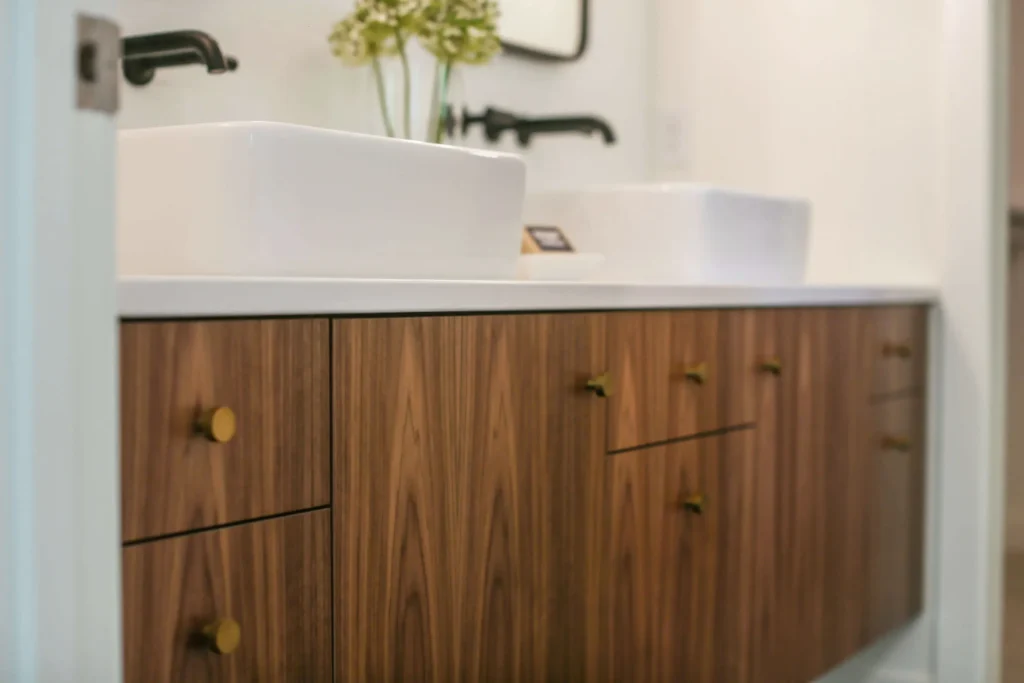
The thicker build and stronger hardware make them sturdier than most bathroom vanities. But durability doesn’t equal moisture resistance. Even high-end wood can deteriorate in damp conditions if left unsealed.
If you combine strong kitchen cabinetry with proper waterproofing, you can achieve both durability and longevity.
Do kitchen cabinets increase or reduce home value?
When executed professionally, custom conversions can enhance your bathroom’s value. But poor workmanship can have the opposite effect.
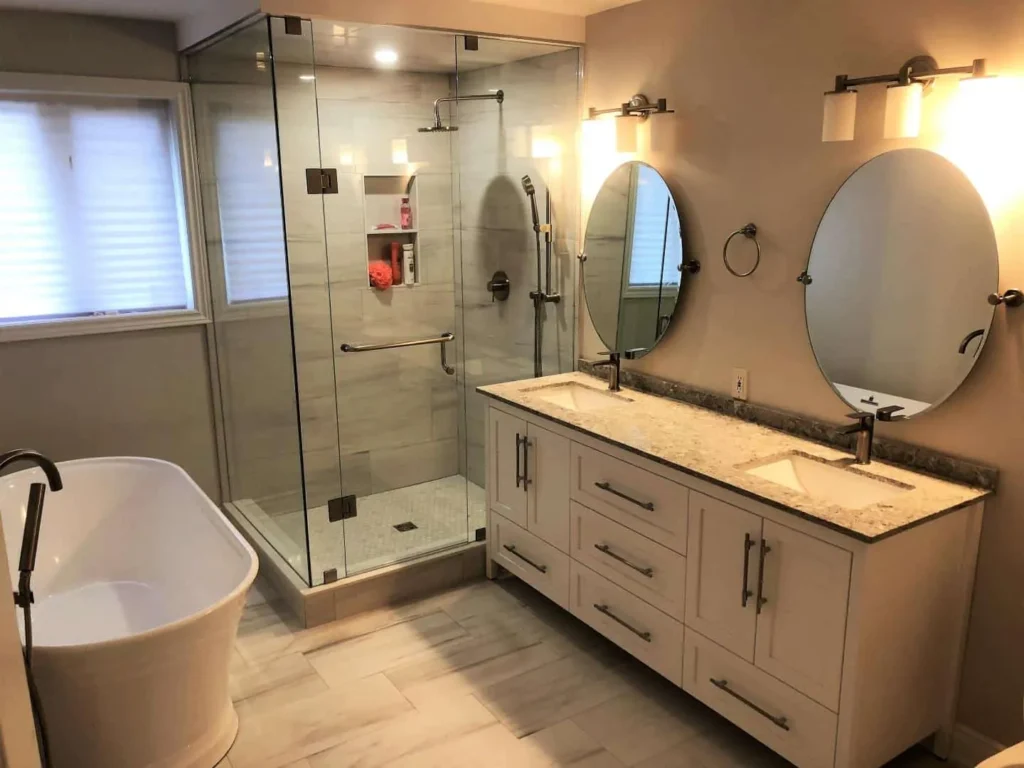
Appraisers often focus on quality and functionality. If cabinets appear mismatched or water-damaged, they’ll reduce perceived value. Yet, if they’re well integrated—especially in coordinated color and material palettes—they can elevate the space’s uniqueness and charm.
Conclusion
Using kitchen cabinets in bathrooms can be a clever, cost-saving idea—but only if you understand the differences in height, humidity, and materials. Proper sealing and planning make all the difference.
Final CTA
Planning a remodel that blends kitchen durability with bathroom style? Send us your floor plan. We’ll suggest the best cabinet options, waterproof finishes, and layout solutions for your space. Want to start? Just send your floor plan—we’ll handle the rest.
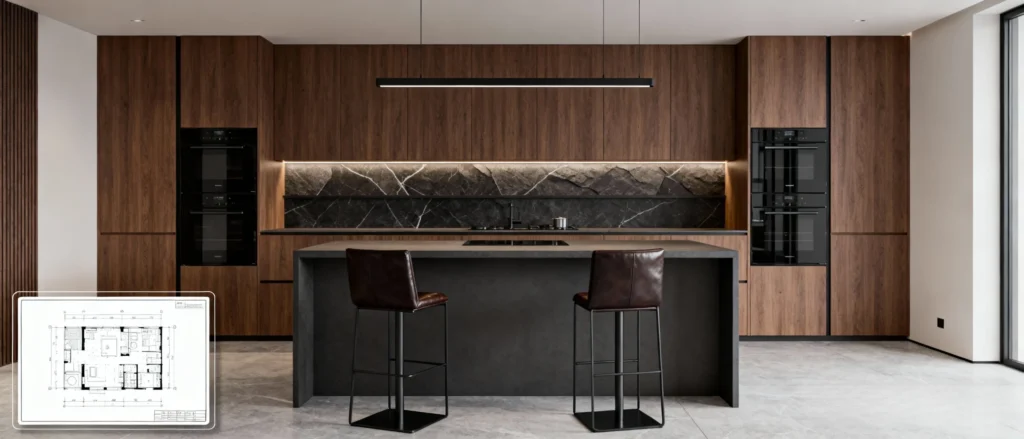
FAQ
Q: Can kitchen cabinets handle bathroom moisture without damage?
A: Only if sealed and coated with waterproof paint or varnish. Unprotected wood will warp or swell quickly.
Q: Is it cheaper to repurpose kitchen cabinets than buy new ones?
A: Yes, but costs vary depending on waterproofing and countertop replacement.
Q: Do I need to replace cabinet doors for bathroom use?
A: Not always, but using PVC or coated MDF doors improves longevity.
Q: Can I use a kitchen island base as a bathroom vanity?
A: Yes, it can work beautifully with a vessel sink and waterproof counter.
Q: Should I paint or laminate for better moisture resistance?
A: Laminate resists humidity better; paint offers more flexibility for color customization.
Q: Can kitchen cabinets hold stone or quartz countertops in bathrooms?
A: Yes. Their structure is strong enough to support heavy counters with proper bracing.
Q: Do bathroom cabinets require special ventilation?
A: Yes. Good airflow prevents mold and extends the cabinet’s lifespan.
Q: Will using kitchen cabinets void my home warranty?
A: Unlikely, but modifications should comply with building codes and plumbing standards.

